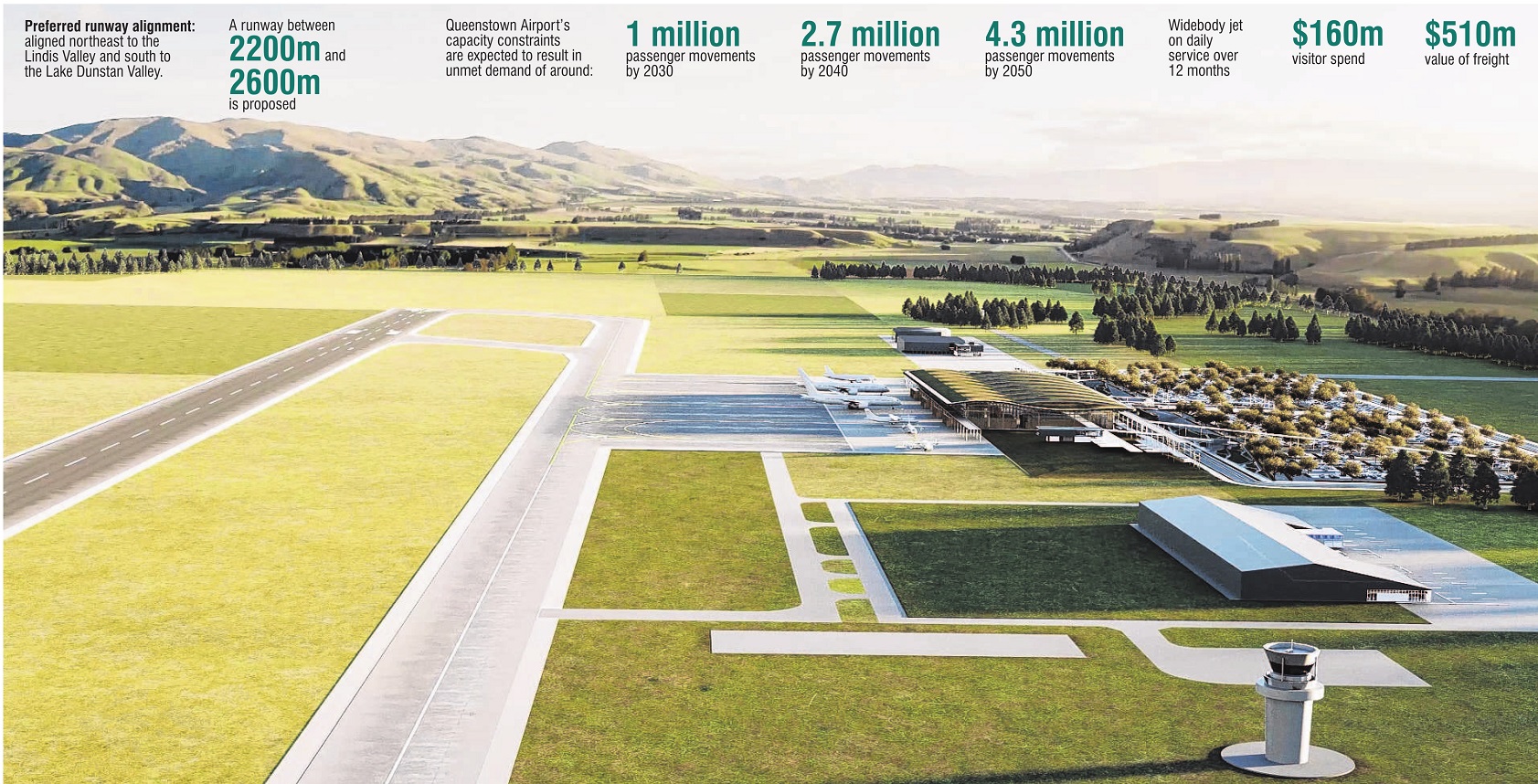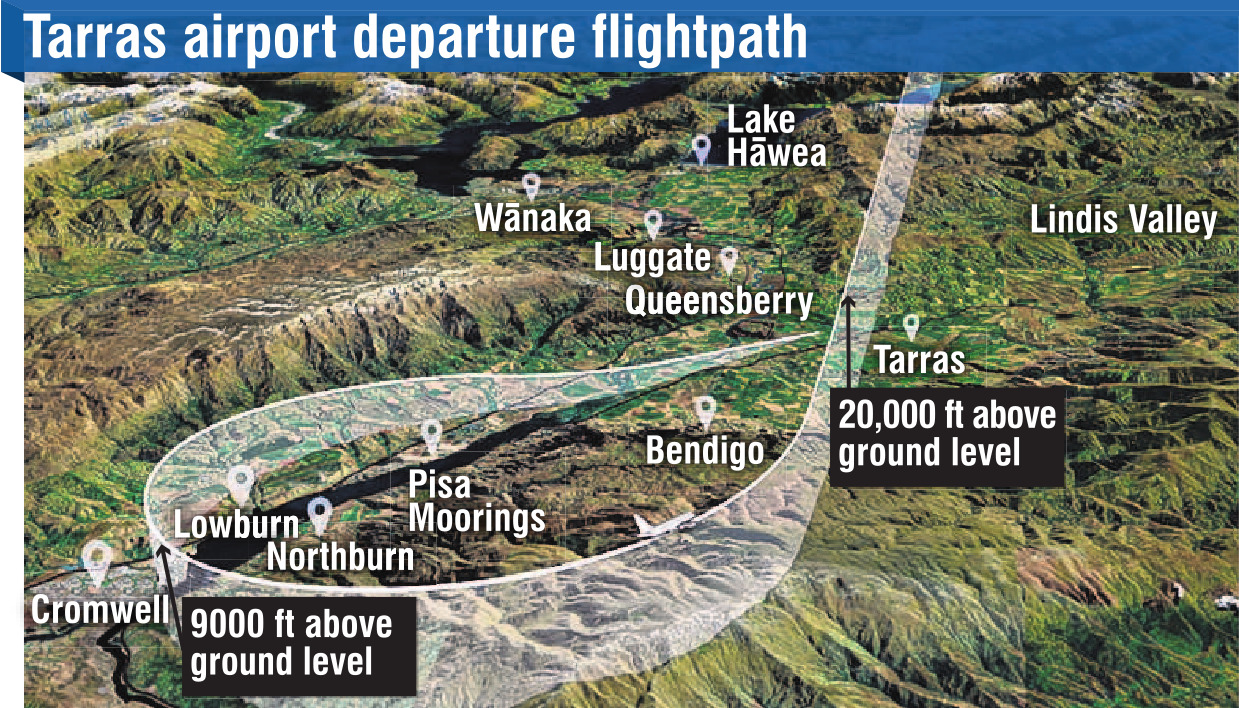The preferred runway alignment for the proposed Tarras Airport would put some flights on a path directly above Cromwell.
A report released by Christchurch Airport yesterday, which summarises several key findings from Christchurch Airport’s ongoing assessment of the Tarras site, reveals the company’s preference of two potential runway alignment options — one aligned with the Hawea Valley, and a second with the Lindis Valley.
Christchurch International Airport Ltd Central Otago project director Rhys Boswell said two years’ worth of "detailed analysis on flight paths" had been conducted before the project team settled on the Lindis Valley alignment as the preferred option.
"We looked at safety ramifications.
"We looked at prevailing weather patterns.

Among the benefits listed in the report for the Lindis Valley option included an "enhanced reliability for low visibility conditions", "greater payload capacity" and "reduced community noise impact".
While the proposed flightpath of some departures on the Lindis Valley runway would take planes directly over Cromwell, video concepts released by Christchurch Airport indicate that at a climbing altitude of about 9000ft, there would be a reduced noise impact on residents below.
The report also makes the case for a runway length of between 2200m and 2600m on the proposed site, allowing the airport to accommodate a "broad range" of narrow-body and wide-body aircraft.
At the minimum proposed length of 2200m, Tarras’ runway would be longer than those at Dunedin, Queenstown and Wellington airports, and could cater to widebody jets such as the Airbus A350-900 from destinations in Australia and the South Pacific.
"Widebody jets can enable 3.5 times higher value compared to narrowbody jets, bringing significant economic benefits," the report said.
A widebody jet on a daily service could bring in $160 million in visitor spending or transport $510m in freight a year, it said.

The report continued to make the case there would be issues for residents and visitors without an additional airport.
By 2050, demand for seats by Central Otago residents could be more than three times higher than the number available, the report said.
It said by 2030, a total of 1 million passengers would require an alternative to Queenstown Airport.
There would be an unmet demand of about 2.7 million passengers by 2040 and 4.3 million passengers by 2050, it said.
The report was made available yesterday at the first of three community drop-in sessions hosted by Christchurch Airport at the Tarras Community Hall.
A second session takes place between 2pm and 7pm today at the Cromwell Presbyterian Hall, while a third will be held between 2pm and 7pm tomorrow at the Edgewater Resort in Wānaka.
Chief strategy and stakeholder officer Michael Singleton said the report was the product of a "long project" that was still in the planning stages.
"These things aren’t a sprint.
"We’re talking about planning for future generations, so it’s important to take the time to get that right."
While no solid timeframe for the airport’s construction has been given, Mr Singleton said the consent approvals process could begin as soon as next year.
"I think it’s tracking well now. We’ve seen, certainly in New Zealand, a return of visitor numbers ... a desire for people to be travelling and connecting."












